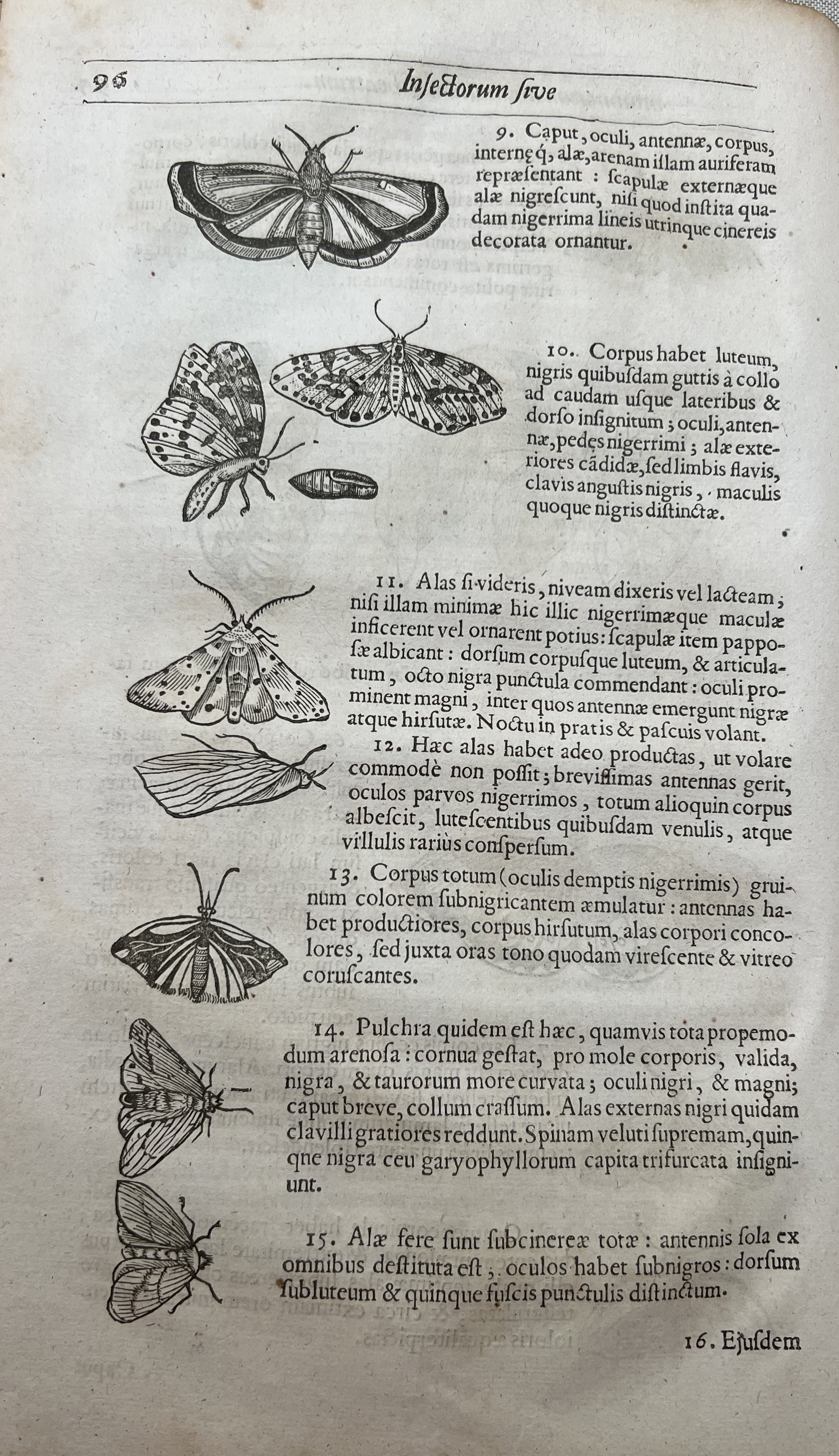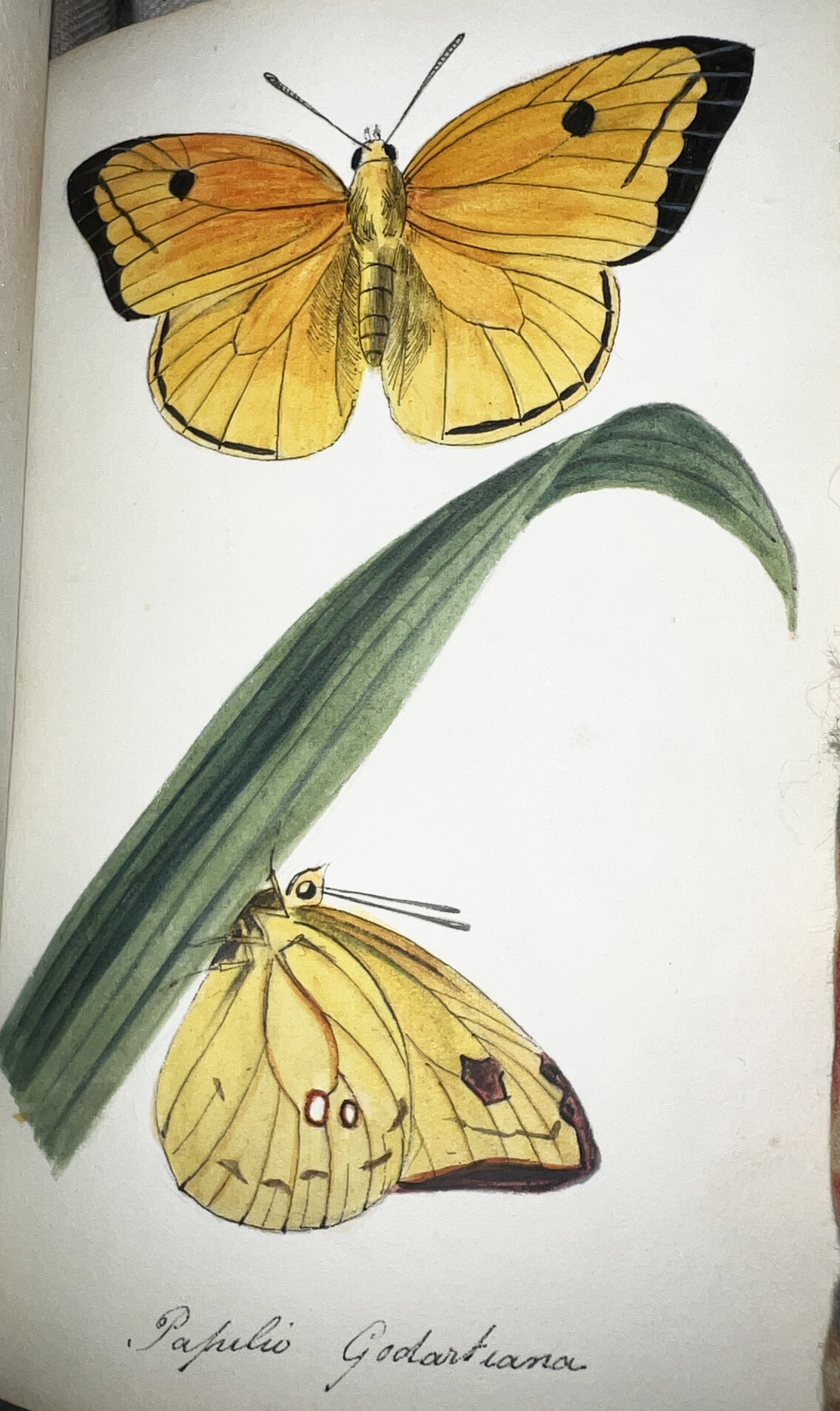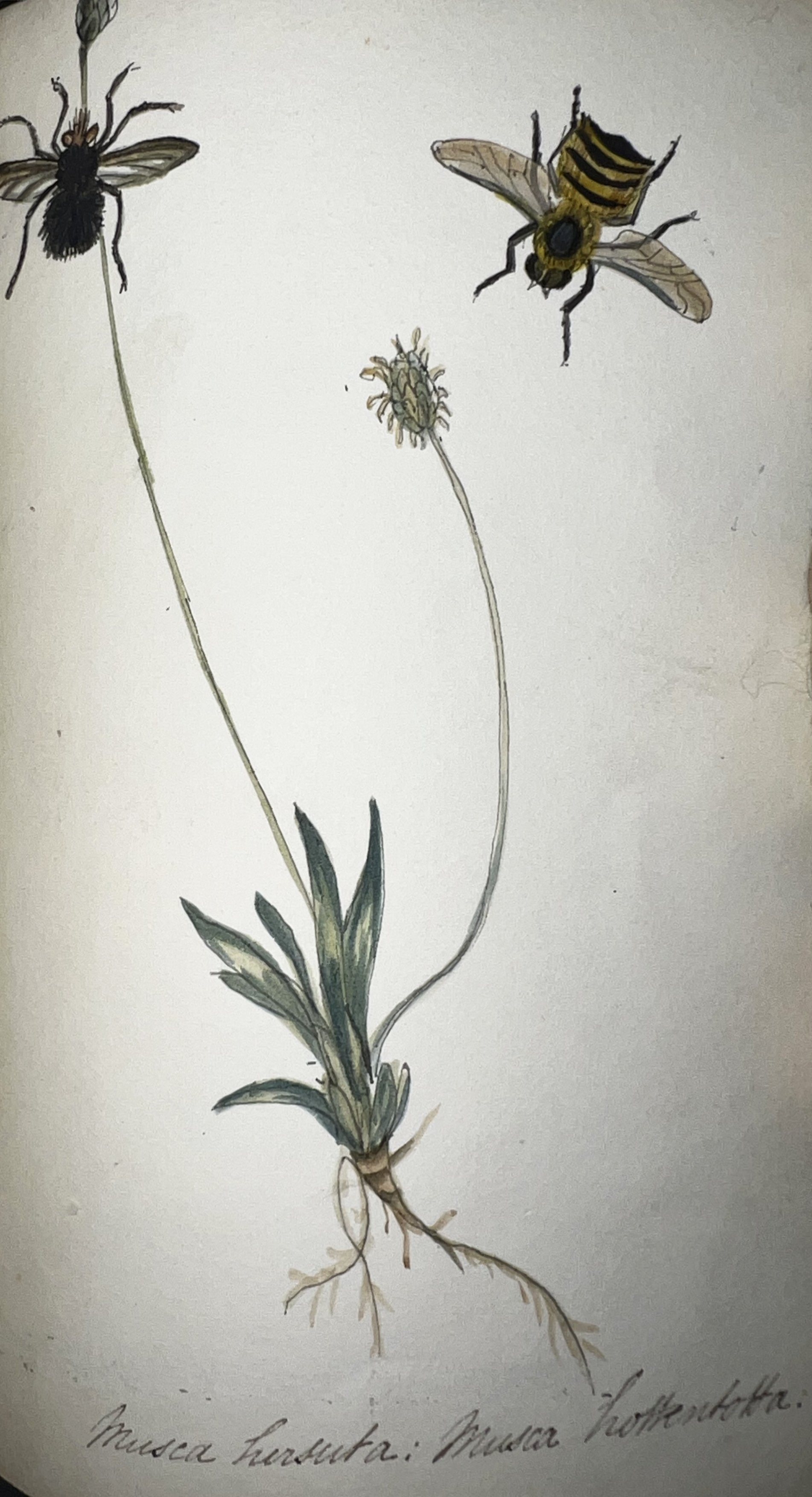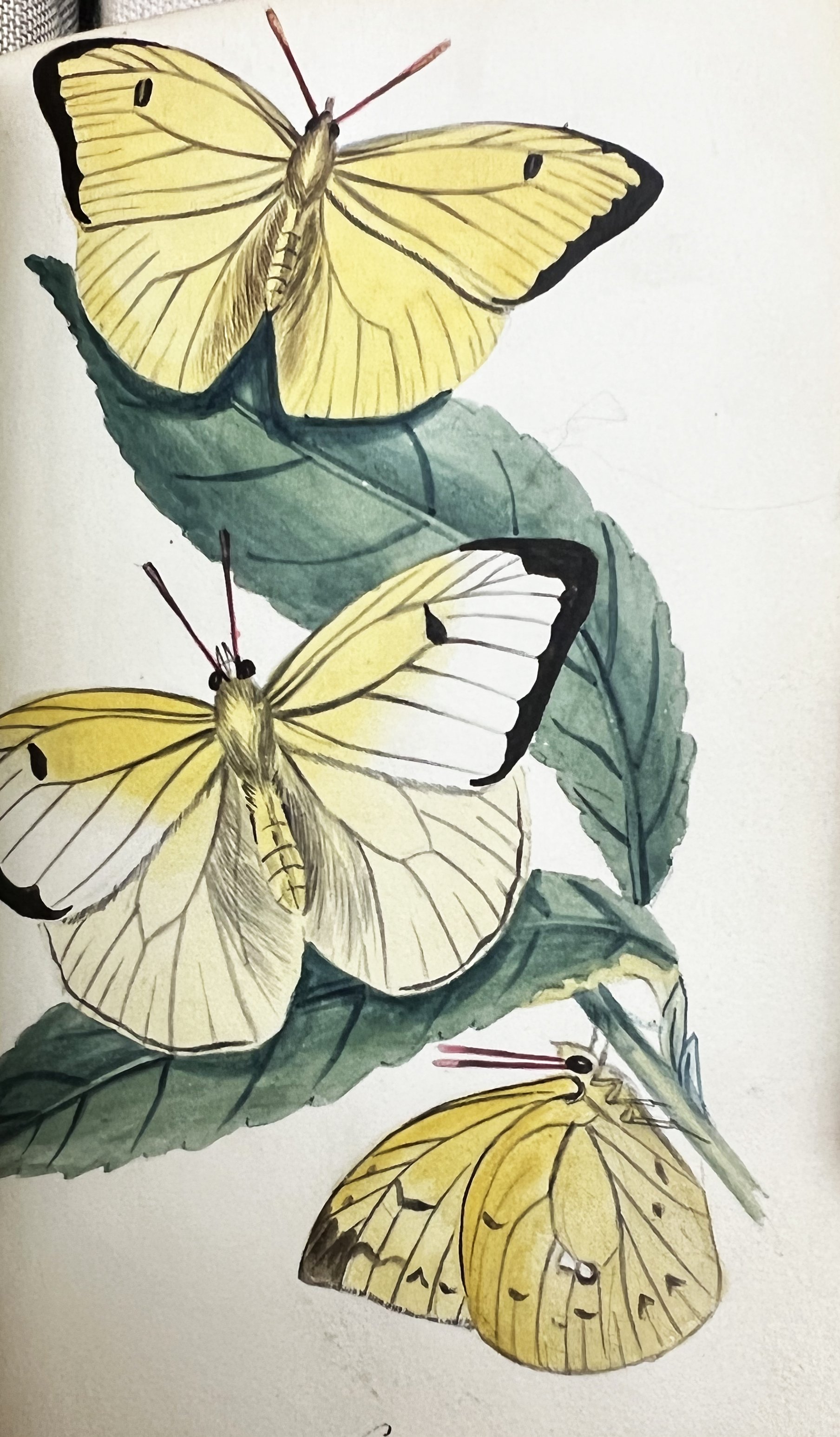Creepy-Crawly History: Insect Books in the Oak Spring Garden Library
Macey Wissell
Libraries play a crucial role in society, serving as gateways to knowledge and culture. The Oak Spring Garden Library is home to an expansive and curious collection of books obtained by Bunny Mellon over the years, most of them about the natural world.
Among them are many unique texts featuring insects, which a natural history-focused collection wouldn’t be complete without! Insects make up an extremely important part of nature, creating the biological foundation for all terrestrial ecosystems. They cycle nutrients, pollinate plants, disperse seeds, maintain soil structure and fertility, control populations of other organisms, and provide a major food source for other taxa. Scroll down to explore several beautiful and unusual books about insects in the collection.
Harris, Moses (English, 1730-circa 1877). Three albums of insects. London, 1768-1776
These manuscripts are comprised of 150 water and body color drawings on vellum containing 666 specimens of insects, each mounted on paper with guard leaves and tissue, each measuring about 11 ¼ x 9 ⅛ inches. The drawings were executed for Drury’s Illustrations of Natural History, published 1770-1782. Harris’ paintings were of the specimens selected by Drury. Drury was a prosperous London silversmith who was interested in entomology throughout his life. The large books are delicate with age, the pages lined with gold paint, and titled by the spine. The vibrant colors bring the illustrations to life, highlighting parts of insects that the naked eye may not always catch at first glance.


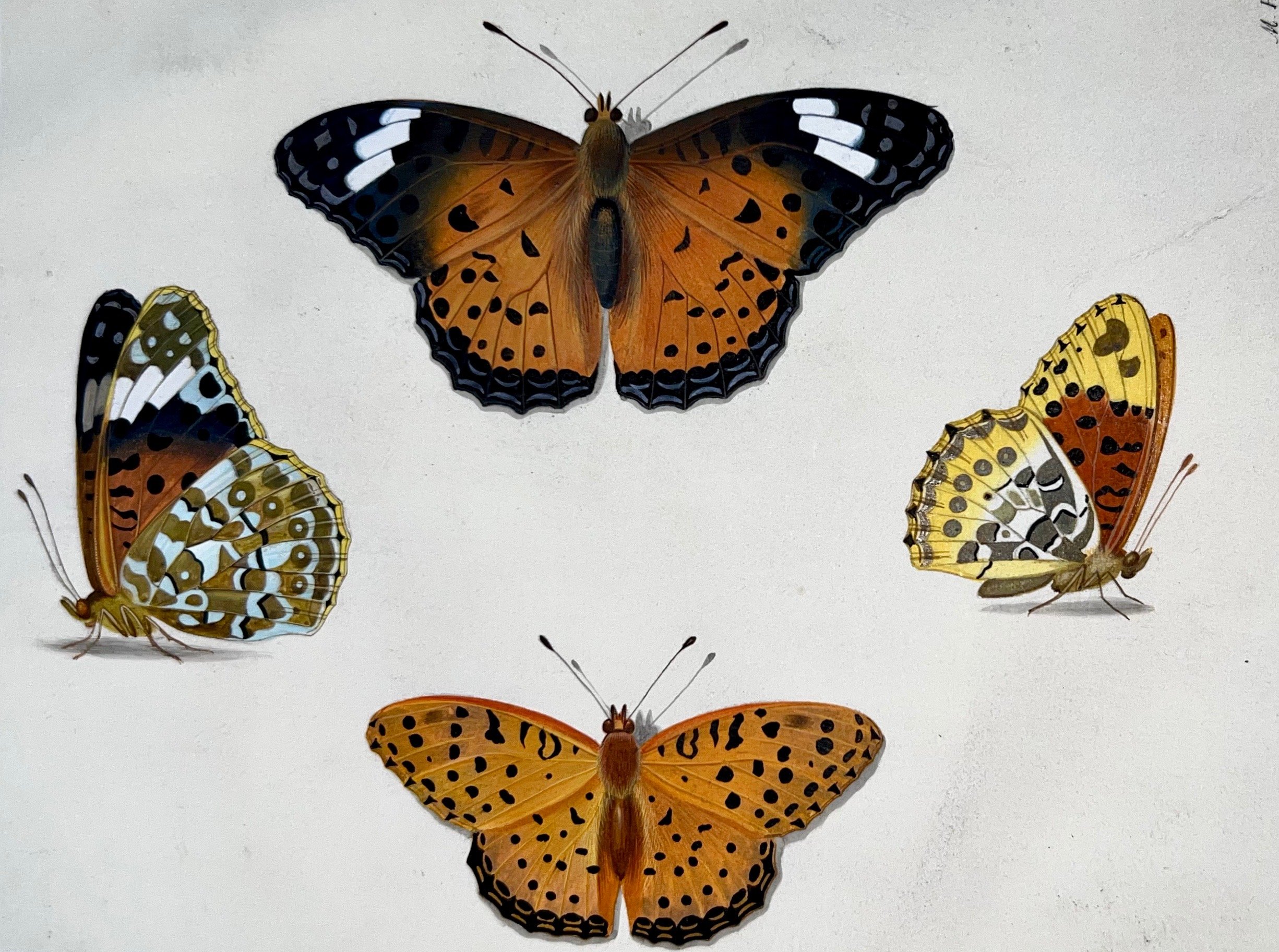
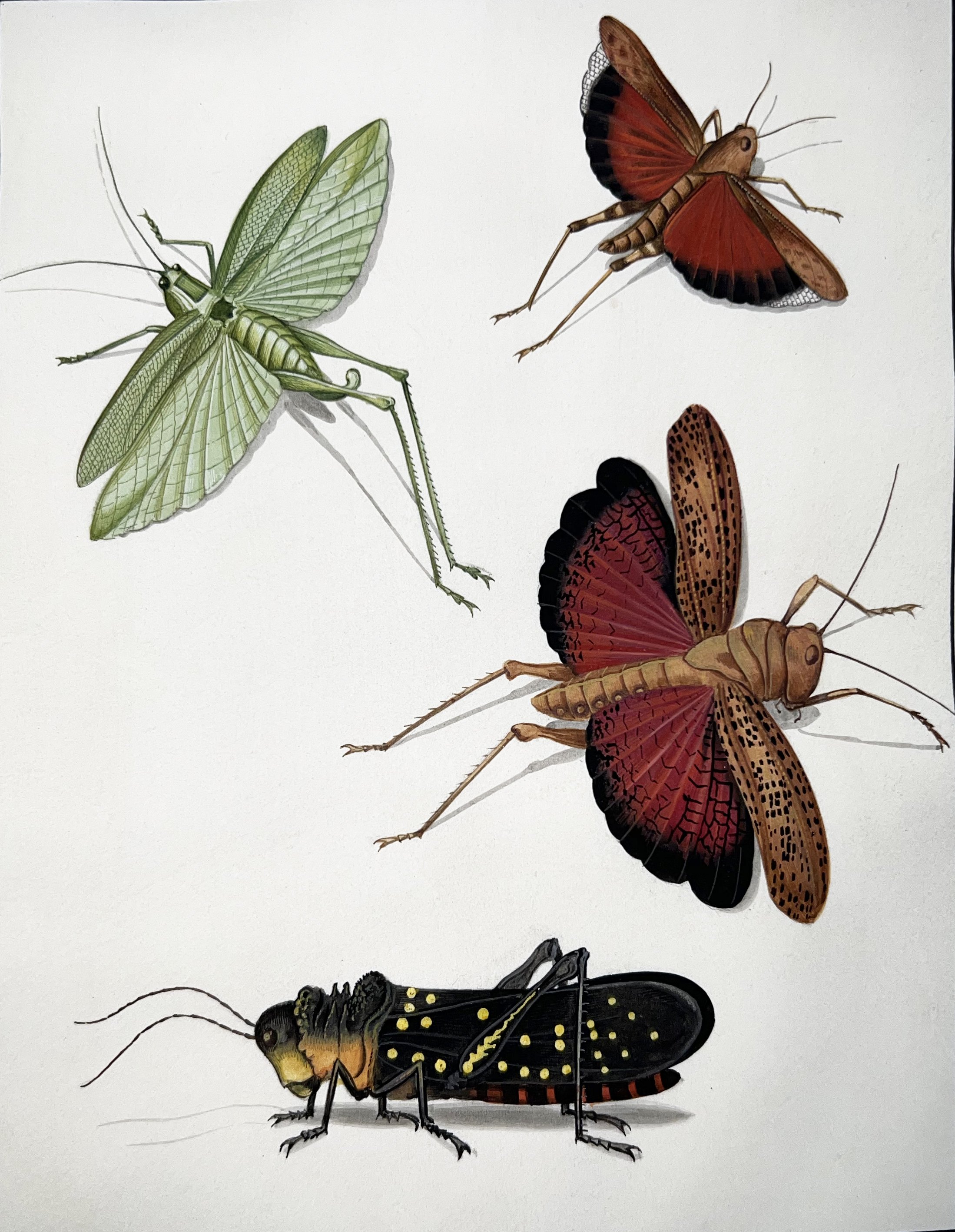
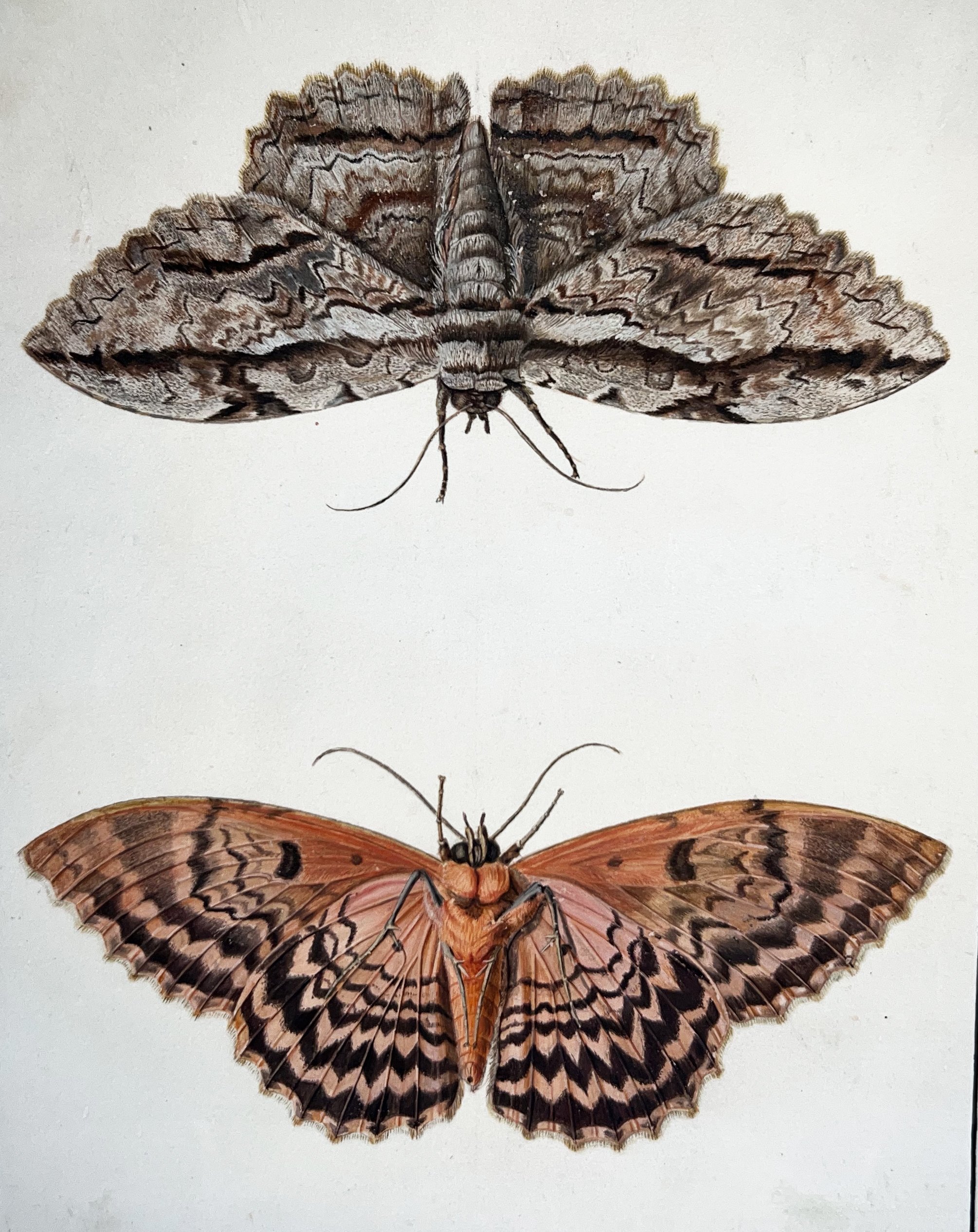
Moffet, Thomas (1553-1604). INSECTORUM SIVE MINIMORUM ANIMALIUM THEATRUM: OLIM AB EDOARDO WOTTONO. London, 1634.
This book is bound with sheepskin, which is a process that has been around for more than 500 years, but also makes the book delicate. It’s one of the first treatises dedicated to insects, the first compiled by Englishmen, and the first published in England.
The Insectorum was published posthumously and has a strange history. In 1565, Conrad Gesner died and left an unfinished work on entomology, which was sold to his friend, Thomas Penny, who has already done some work of his own on Gesner’s collection. Penny was editing notes of Edward Wotton before his own death in 1589. Moffet rescued the material from Penny’s heir and used his knowledge gathered on the continent, added descriptions and drawings. He describes their habitats and breeding and economic importance, beginning with bees, which are accorded the most detailed treatment and pride of place on the title-page.
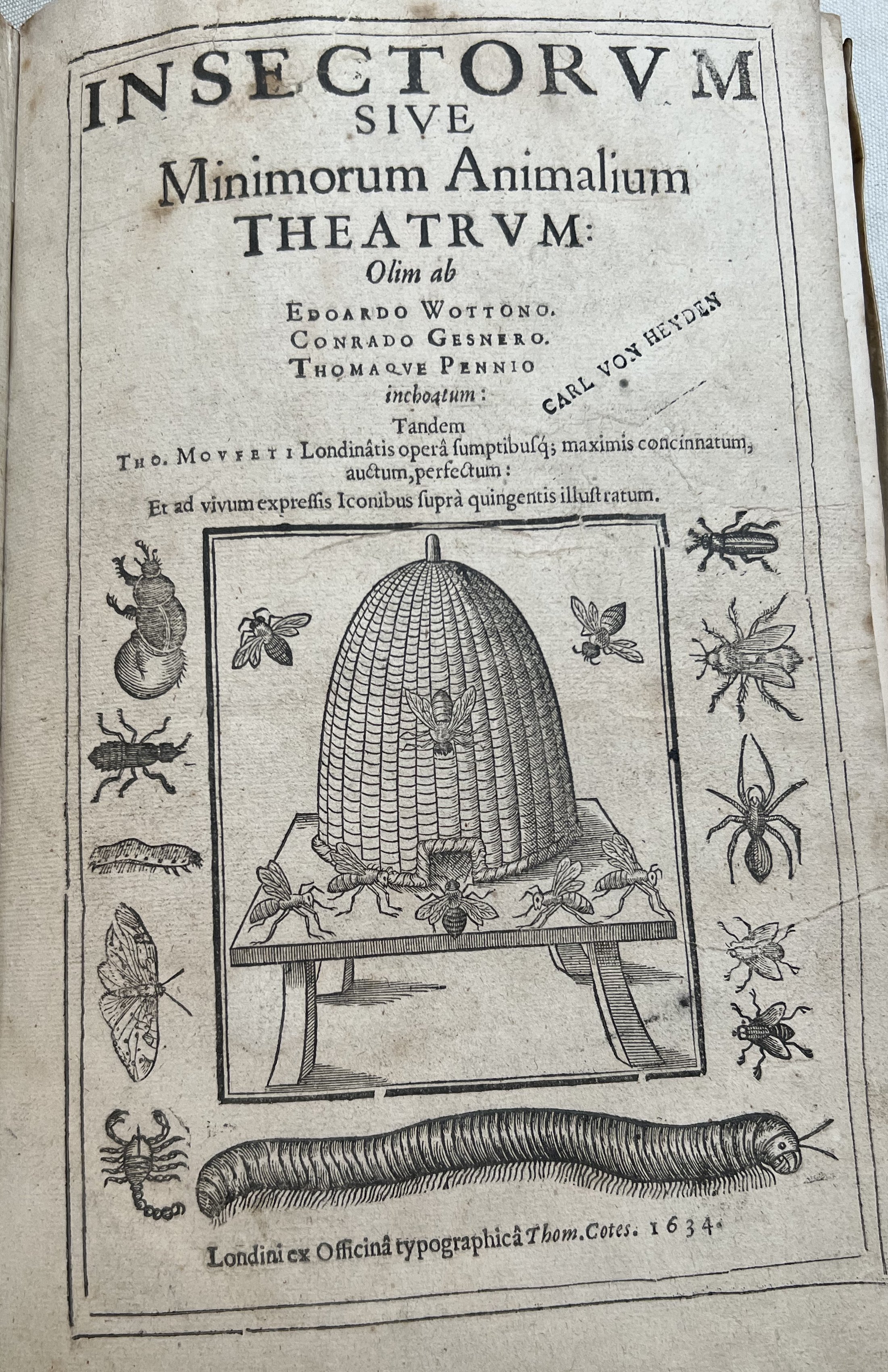
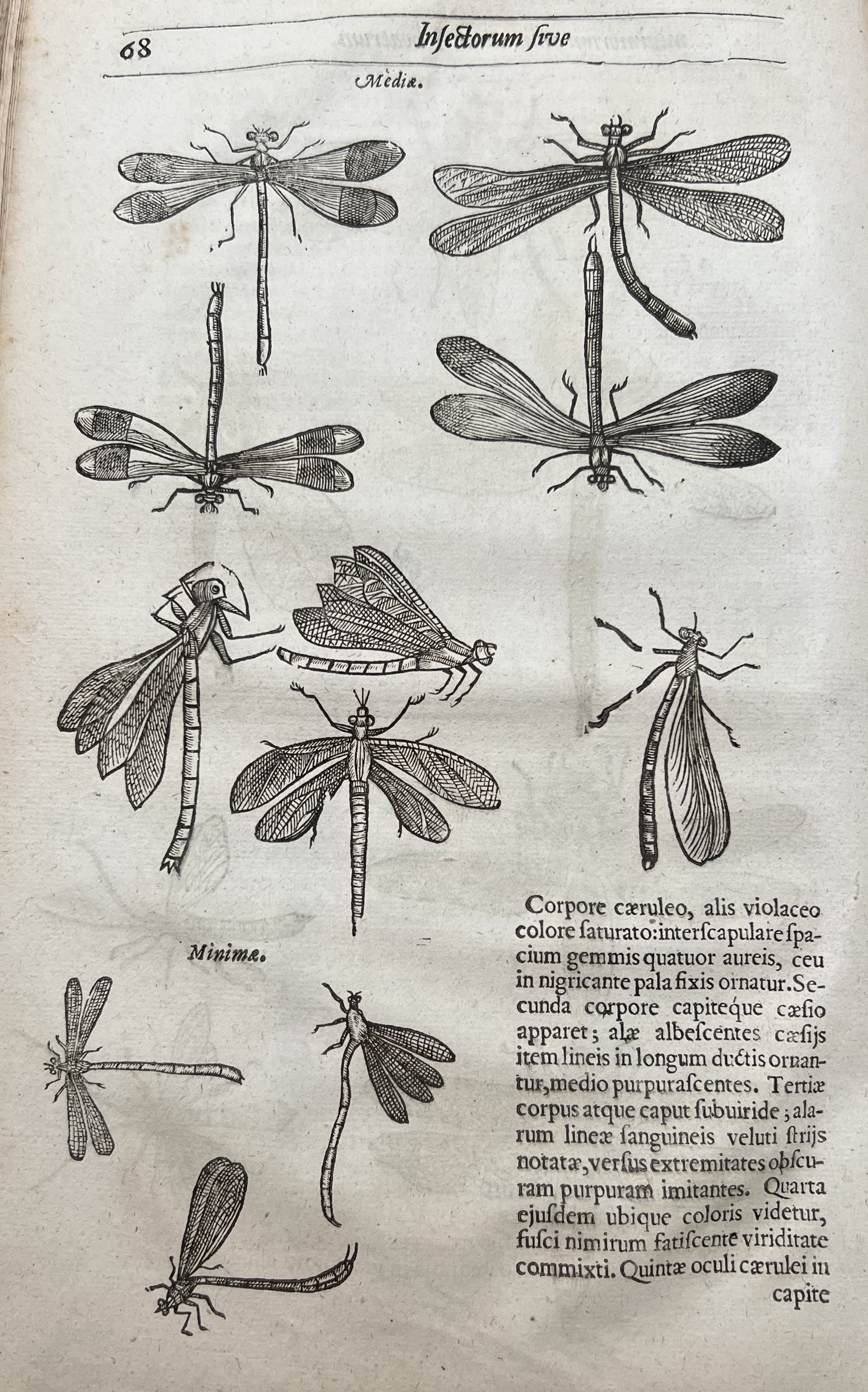
ENGLISH SCHOOL. Album of Insects. 19th Century.
This small book has an unknown illustrator. Every page is hand painted beautifully, and it even has some insects that are found here at Oak Spring! The book is a manuscript of 48 leaves that contain water color drawings of various insects - 52 species of bees, beetles, butterflies, grasshoppers, moths, and others. They are all inscribed with their scientific names and a few are depicted with plants.
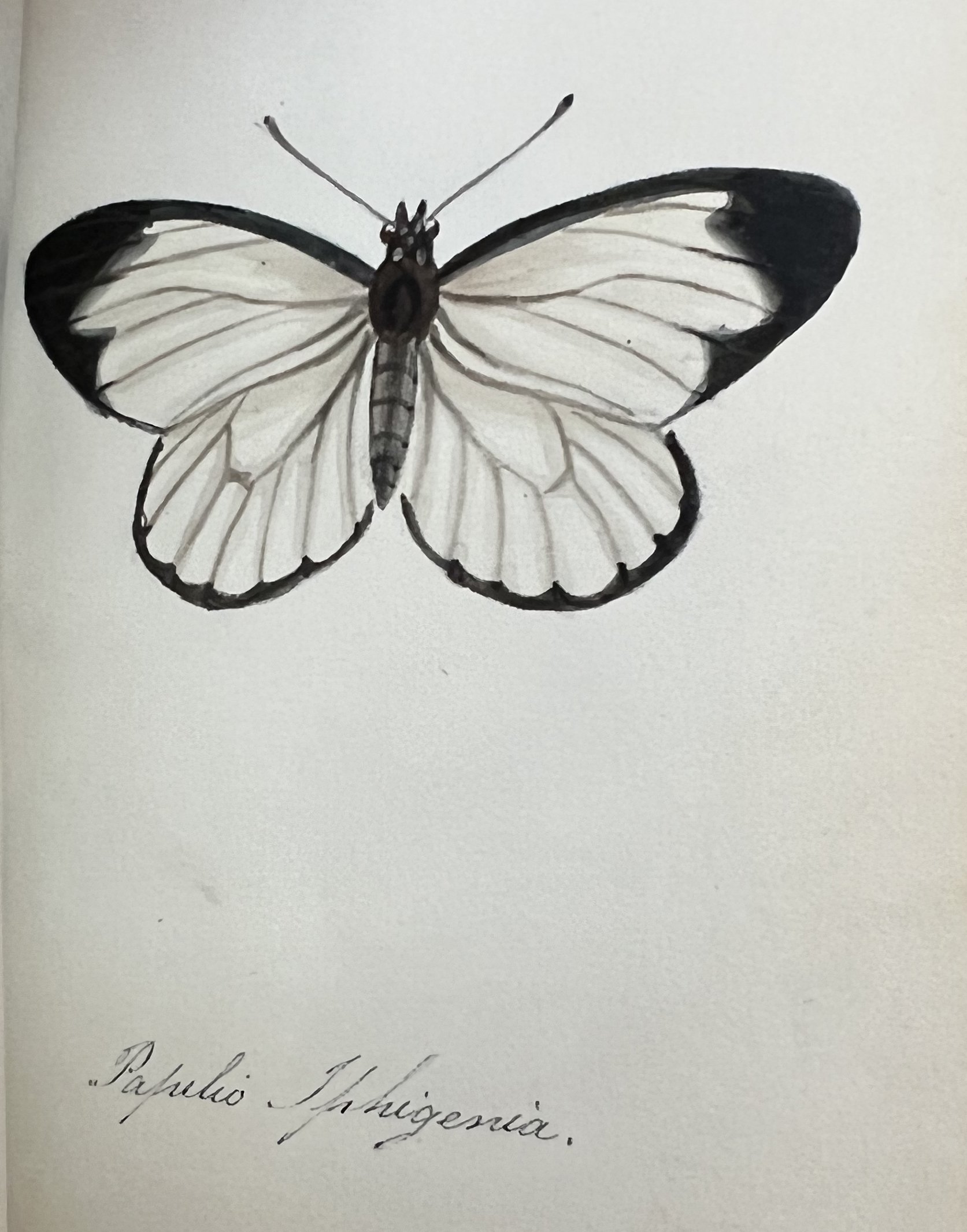
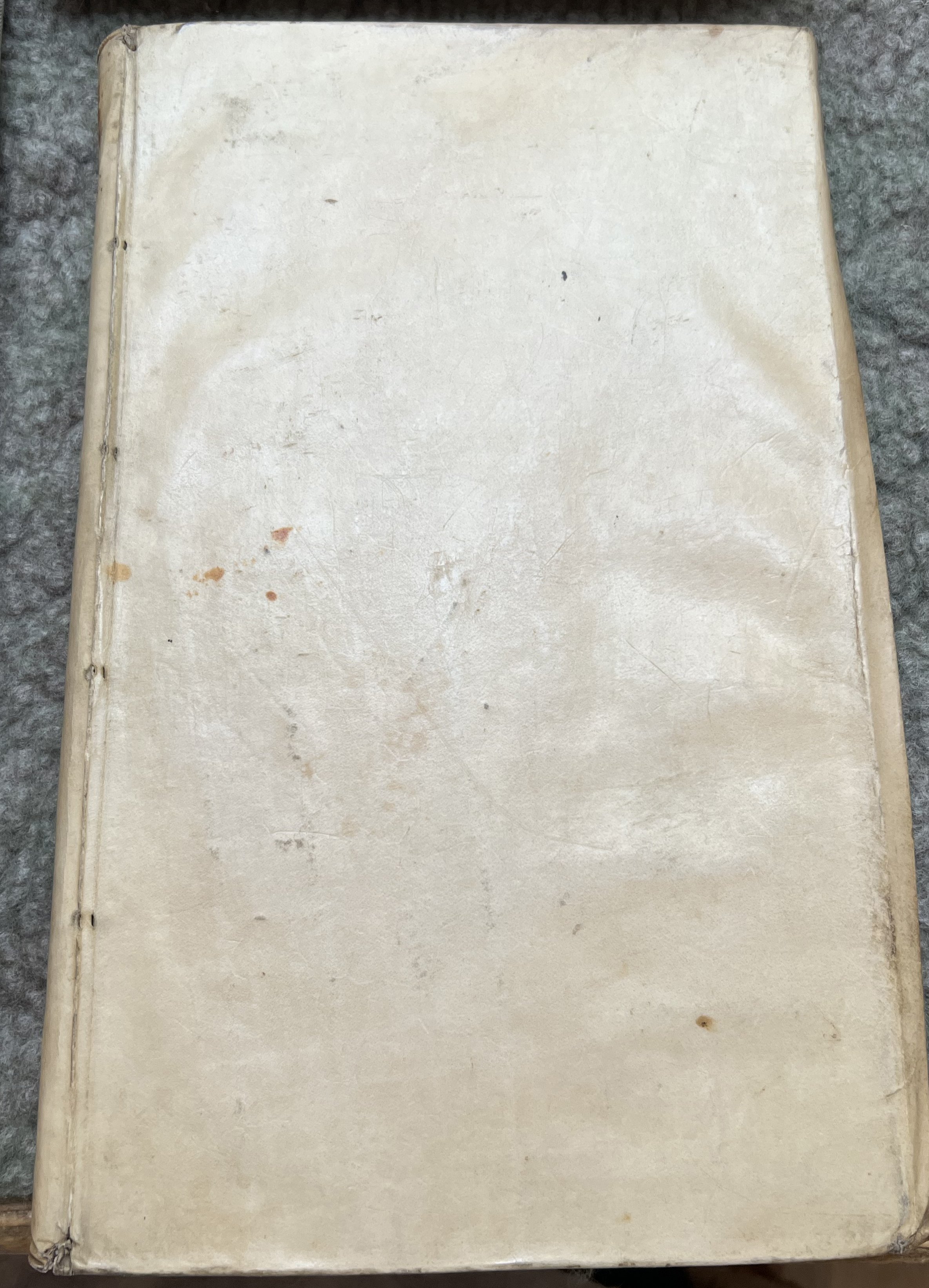
BAZIN, GILLES-AUGUSTIN (1681-1737). ABREGE DE L’HISTOIRE DES INSECTES, POUR SERVIR DE SUITE A L’HISTOIRE NATURELLE DES ABEILLES. AVEC DES FIGURES EN TAILLE-DOUCE. TOME PREMIER. Paris, 1747-1751
This miniature French book has few illustrations, but holds a surprise at the end. It has drawings that unfold as they are too big to fit on the page sizes. The illustrations are hand drawn meticulously. There are 53 engraved plates in the book.
Interested in learning about the real butterflies, moths, and other insects that make the Oak Spring Garden Foundation home? Our staff ecologist, Rea Manderino, will be leading two biodiversity walks on site in July - learn more about them here!

